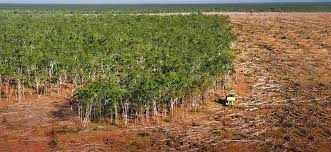Report after report shows that Australia is failing to arrest the decline of its natural ecosystems. Climate change is worsening the risk for severe bushfires, floods, droughts, and heatwaves, and poor river health, loss of soil fertility, fragmentation of native ecosystems and an increase of invasive species has increased pressure on aquatic ecosystems and accelerated biodiversity loss. This environmental degradation translates into significant current and future threats to Australian livelihoods.
This decline is due to many factors – the drive for economic growth, native land-clearing, urban development, demand for natural resources, especially water and fossil fuels, waste and site contamination, increased population and consumption, a lack of action on reducing greenhouse emissions to safe levels and a lack of political will to fix it.
Out national environment laws, introduced in 1999 for ‘matters of national environmental significance, have been weakened and compromised by inaction.
Our plan
- Increase protection of land and marine areas in the National Reserve System to 30 per cent (from the current 19.75 per cent):
- build a network of inter-connected and biodiverse National Parks and make them more accessible to people
- ensure all ecosystems are represented in protected areas
- promote the use of plantation timber and fibre crops instead of cutting down remaining native forests
- stop further land-clearing
- target cleared or degraded land for revegetation
- preference locally indigenous plants in revegetation efforts and include diverse plant forms – tall trees, shrubs, grasses, lilies, sedges, groundcovers etc.
- encourage state and local government to foster urban re-wilding
- Recognise the important relationship that Aboriginal and Torres Strait Islander peoples have in caring for country and their knowledge in traditional management practices.
- Put greater emphasis on indigenous stewardship of national parks and protection of culturally significant sites
- Integrate Indigenous cultural burning into natural resource management
- Reform federal laws to give Aboriginal and Torres Strait Islander people control of cultural heritage sites that are of value to them, including the right to say no to action that threatens those sites.
- Expand the successful Indigenous Ranger Program to 5,000 ranger positions to meet the needs of a growing number of Indigenous Protected Areas
- Properly implement and enforce the Federal Environment Protection, Biodiversity Conservation (EPBC) laws for effective protection of nature and adopt all 38 recommendations of the recent Samuel Review and those of the Auditor General.
- Act on protecting the 1,974 threatened species and ecosystems listed under the EPBC Act
- Increase Commonwealth funding for threatened species recovery
- Include the protected areas of the National Reserve System on the list of matters of National Environmental Significance under the EPBC
- Lead efforts to breed up and reintroduce threatened species to existing and new parks
- Recognise the interconnectedness of nature and the crucial role of fungi in maintaining healthy ecosystems
- Implement a national invasive species strategy to prevent weed and pest animal entry or spread. Strengthen our national biosecurity measures including early warning surveillance.
- Work with states to discourage breeding of destructive introduced animals such as domestic cats, rabbits and ferrets and encourage pet owners to confine their pets
- Suppress trade in native animals captured illegally from the wild.
- Encourage state governments to ban hunting of native animals, including native ducks
- Substantially increase funding for post-bushfire on-ground works, particularly weeding, pest eradication and interventions to save 119 species identified by the Bushfire Expert Panel
- Protect the Great Barrier Reef through:
- climate action
- Crown of Thorns starfish eradication
- maintaining healthy fish populations and
- improving quality of water from rivers
- Progress nominations for World Heritage sites – Flinders Ranges, Parts of Cape York Peninsula, Bunya Mountains extension of the Gondwana Rainforests of Australia, Great Sandy Extension of the Fraser Island World Heritage area
- Water – work with the states to:
- improve water management to tackle water rights, environmental flows, floodplain harvesting, and the water market
- limit water usage by mining and big agri-business, forcing efficiency
- assist property owners to improve vegetation along water courses by eradicating weed species and fencing river banks (riparian zones) to exclude cattle grazing
- establish a patchwork of no-fish zones where fish stocks can safely breed up
- fund eradication of introduced pest species such as European Carp.
- conduct a comprehensive water audit across the Murray-Darling and other key water systems. (See also our Sustainable Agriculture plan)
- Federal and state governments to develop a nationally strategy and higher standards for mining site rehabilitation so taxpayers are not liable for the costs and the oucomes are substantially better for the environment








